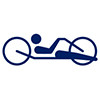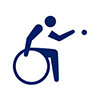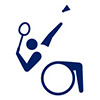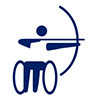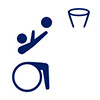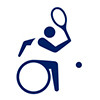Para-archery is a sport of precision, concentration and strength open to all athletes with physical or cognitive impairments: any age, gender and ability. Athletes who may otherwise be dissuaded from participating in sports can participate in archery even alongside athletes without any disability.
There are three divisions in Para-Archery: Recurve Bow, Compound Bow and Visually Impaired. Within these divisions, athletes are classified by their impairment(s) as follows:
Competitors shoot arrows at a target marked with ten scoring zones, from a set distance. Para-archery is very similar to able-bodied archery. Athletes shoot the same rounds, distances and events. The distance from the target and number of arrows shot is the same for para-archery athletes as for able-bodied competitors except for the Visually Impaired (VI) division.
Para-athletes are divided into three functional classes (Standing, Wheelchair 1 and Wheelchair 2).
ARST (also known as ST).
Archery Standing. Athletes may compete standing or in a wheelchair, but have limited impairment.
ARW1 (also known as W1). Archery Wheelchair 1.
Impairment in the arms and legs. Athletes compete from a wheelchair and have “limited function in lower and upper limbs, and usually trunk eg those with high level spinal cord injuries, or high multiple limb amputations”.
ARW2 (also known as W2). Archery Wheelchair 2.
Impairment in the legs. Athletes compete from a wheelchair and have “significantly limited lower limb function with little or no upper limb impairment eg athletes with paraplegia, diplegia or double leg amputation below the knee.”
